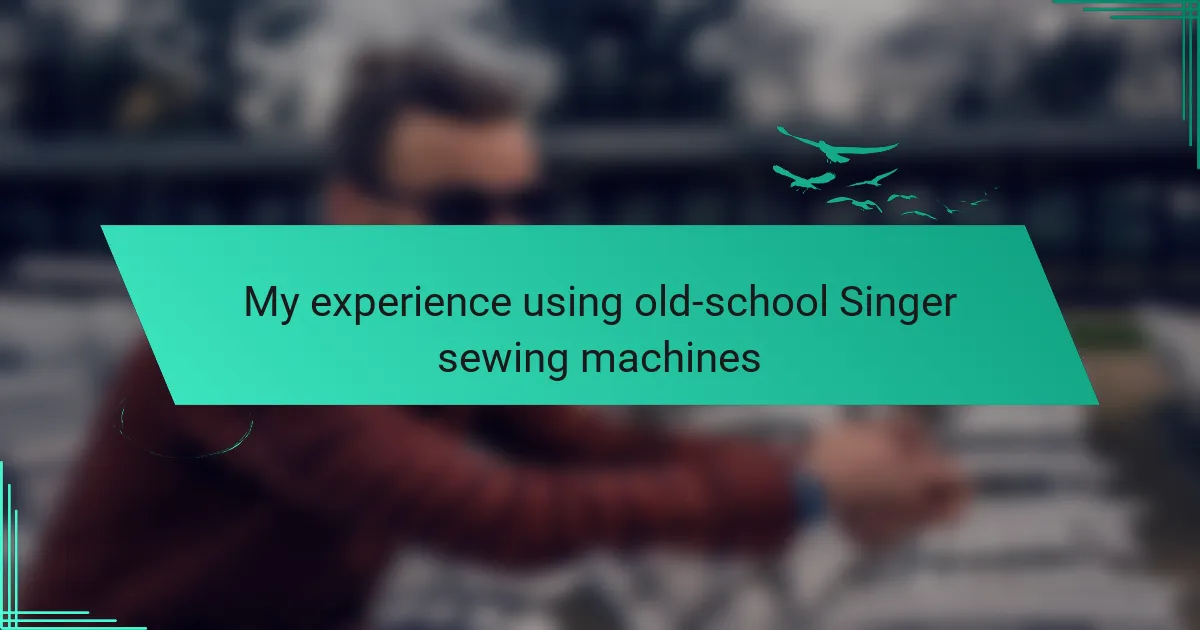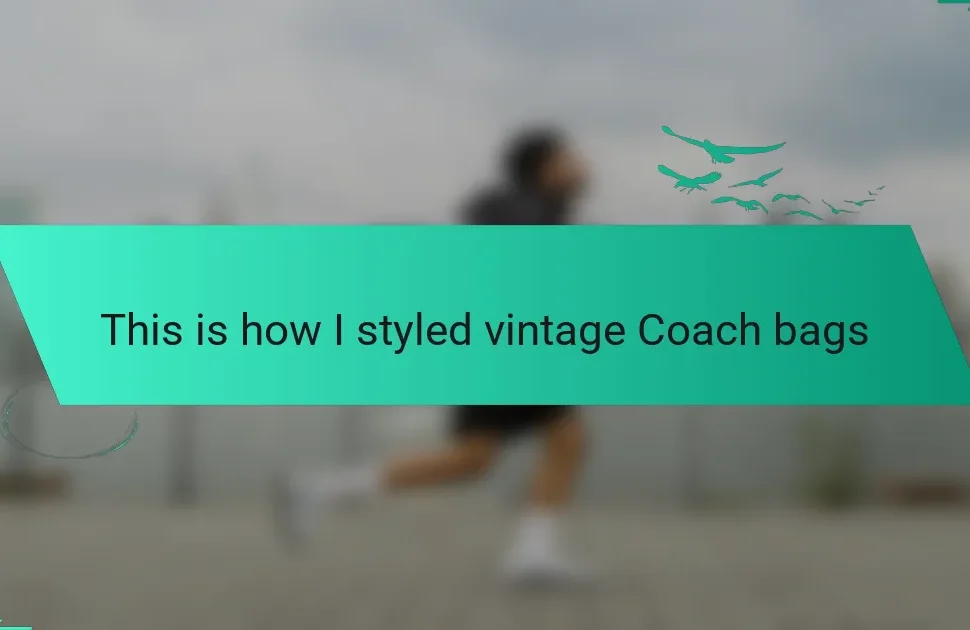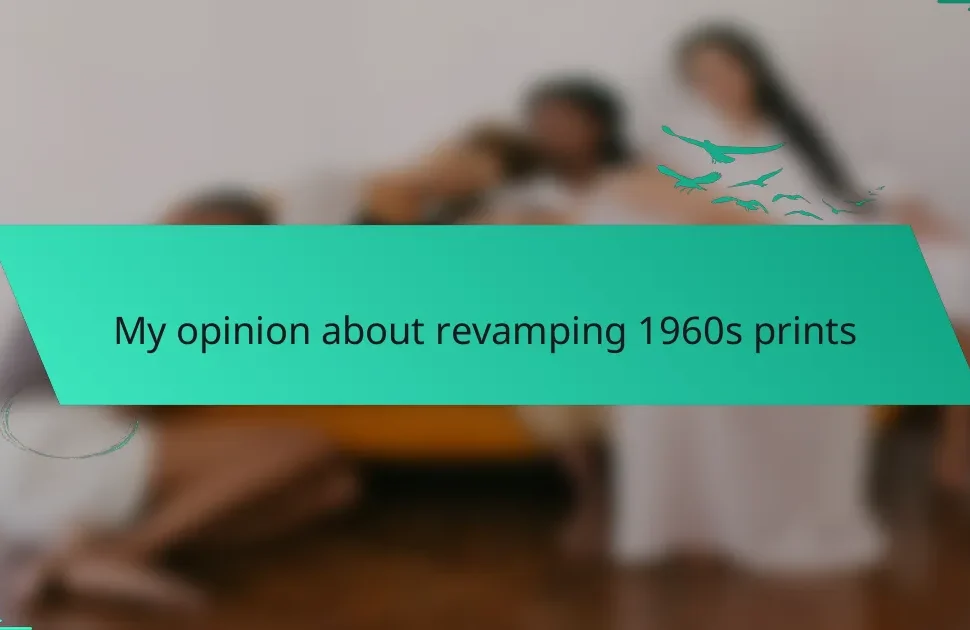Key takeaways
- Vintage fashion DIY offers a creative way to connect with the past, allowing individuals to give new life to old garments.
- Old-school Singer sewing machines promote durability, simplicity, and craftsmanship, enhancing the sewing experience.
- Regular maintenance, such as cleaning and oiling, is crucial for keeping vintage machines in optimal condition.
- Upcycling projects, like tote bags from tablecloths or unique dresses from retro patterns, highlight the beauty of sustainable fashion.
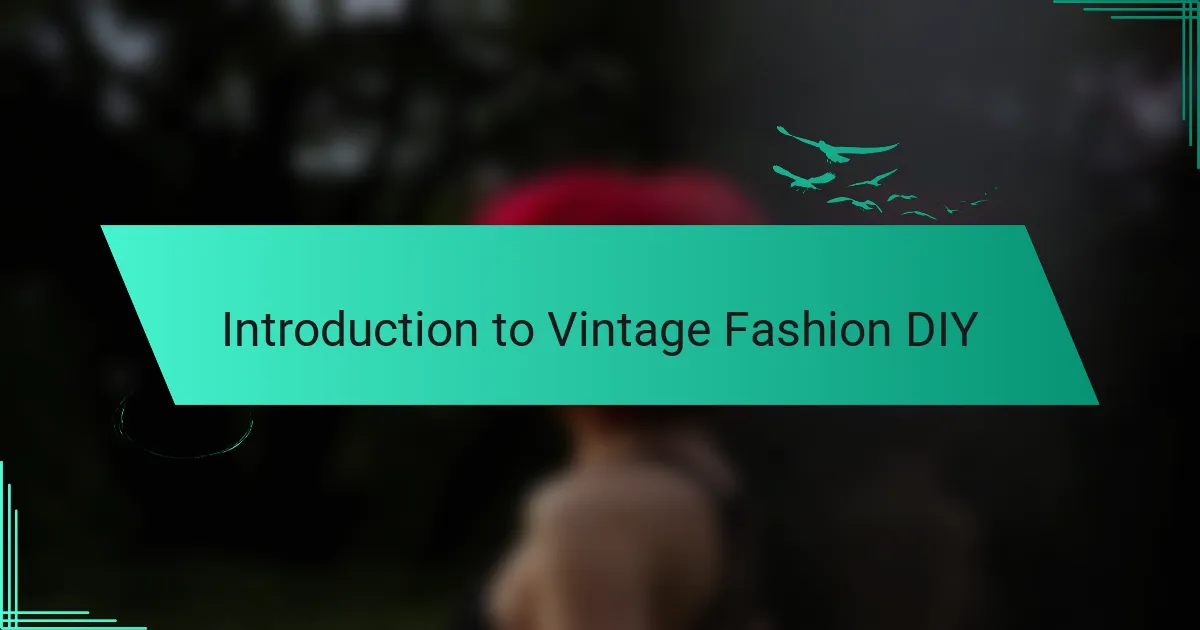
Introduction to Vintage Fashion DIY
Vintage fashion DIY is more than just a trend; it’s a heartfelt journey into the past. I often find myself reminiscing about the first time I picked up a vintage piece, feeling the texture and imagining the stories behind it. Have you ever held a garment and wondered about the life it once lived?
The charm of vintage fashion lies in its unique character and the creativity it inspires. When I choose to upcycle an old piece, I feel a sense of connection with its history, almost like giving it a second chance. It’s amazing how a little imagination, along with some old-school tools, can resurrect something that may have been forgotten.
In this world of fast fashion, vintage DIY stands as a beautiful rebellion. Every stitch I make on my Singer sewing machine not only brings a garment back to life but also allows me to express my individuality. So, why settle for ordinary when you can create something extraordinary that tells your story?
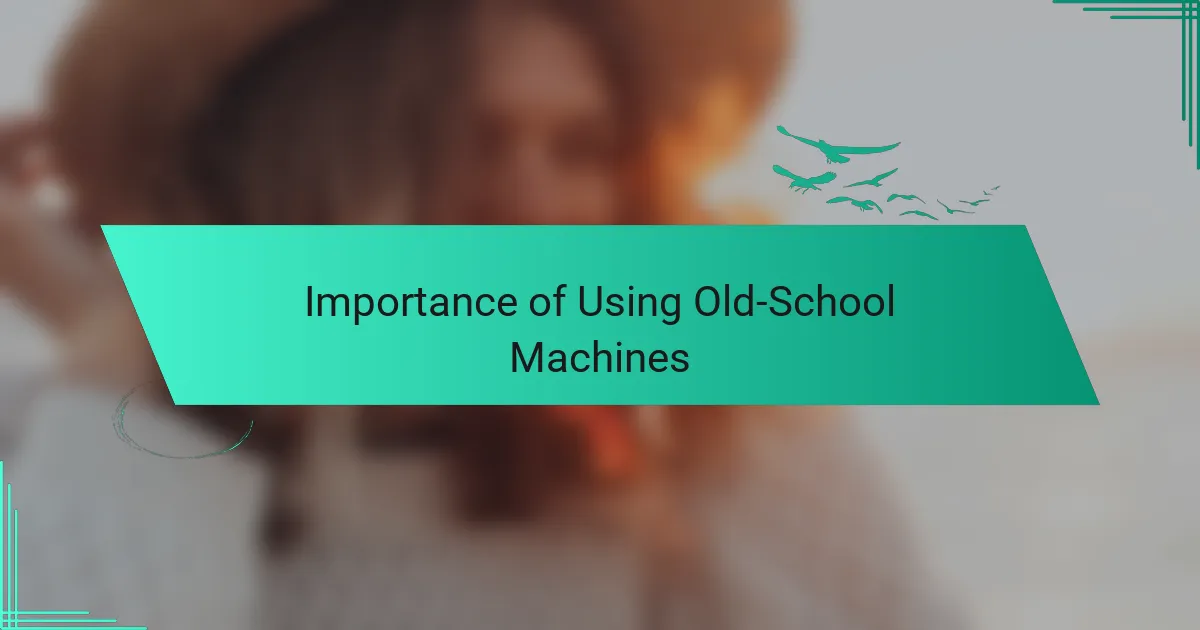
Importance of Using Old-School Machines
Using old-school Singer sewing machines has a special charm that often gets overlooked. For me, it’s not just about fabric and thread; it’s about connecting with history and craftsmanship. I remember the first time I sat down with my grandmother’s Singer, the mechanical clunk of the pedal and the smooth, satisfying sound of the needle working through fabric transported me back to simpler times.
The importance of using these vintage machines goes beyond mere nostalgia; they foster durability and reliability in our creations. Unlike many modern machines designed for speed, these old-school wonders encourage thoughtful, intentional sewing. Here are some key points to consider:
- Durability: Built to last, allowing for years of consistent use.
- Simplicity: Fewer distractions and complications; focus on the sewing itself.
- Craftsmanship: Encourages a deeper understanding of sewing techniques and skills.
- Connection to the Past: Every stitch resonates with stories and traditions.
- Environmental Impact: Supporting sustainability by using machines instead of disposable technology.
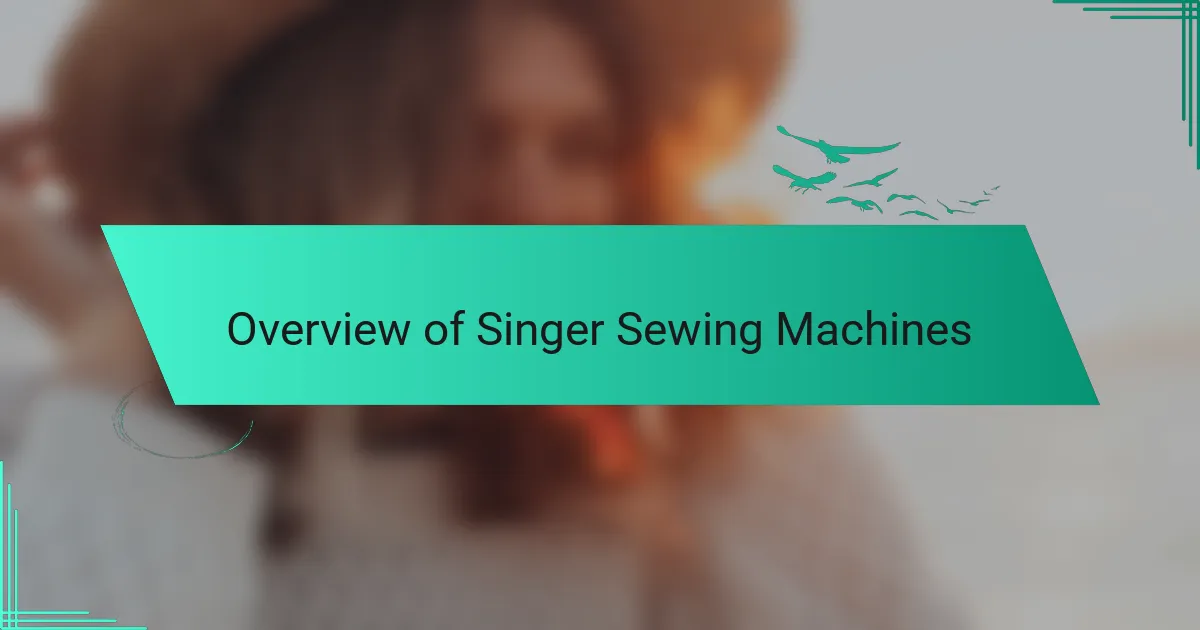
Overview of Singer Sewing Machines
Singer sewing machines hold a special place in my heart and in the world of vintage fashion. My first encounter with a Singer was during a weekend visit to my grandmother’s house. I remember the soft hum of the machine as she effortlessly stitched fabric pieces together, creating beautiful garments from scratch. The iconic design and reliable functionality of these machines have earned them a timeless reputation.
In my experience, the appeal of Singer sewing machines goes beyond their utility; they embody a rich history of craftsmanship. Many models have been cherished not just as tools, but as integral parts of family legacy.
- Known for their durability and reliability, making them ideal for both beginners and seasoned sewists.
- A wide variety of models, from the delicate Featherweight to sturdy industrial types, each with its unique charm.
- Often easy to maintain, with readily available parts and repair services.
- Support for diverse sewing styles, whether for quilting, garment making, or home decor projects.
- A nostalgic connection to past eras, evoking a sense of appreciation for traditional craftsmanship in modern DIY fashion.
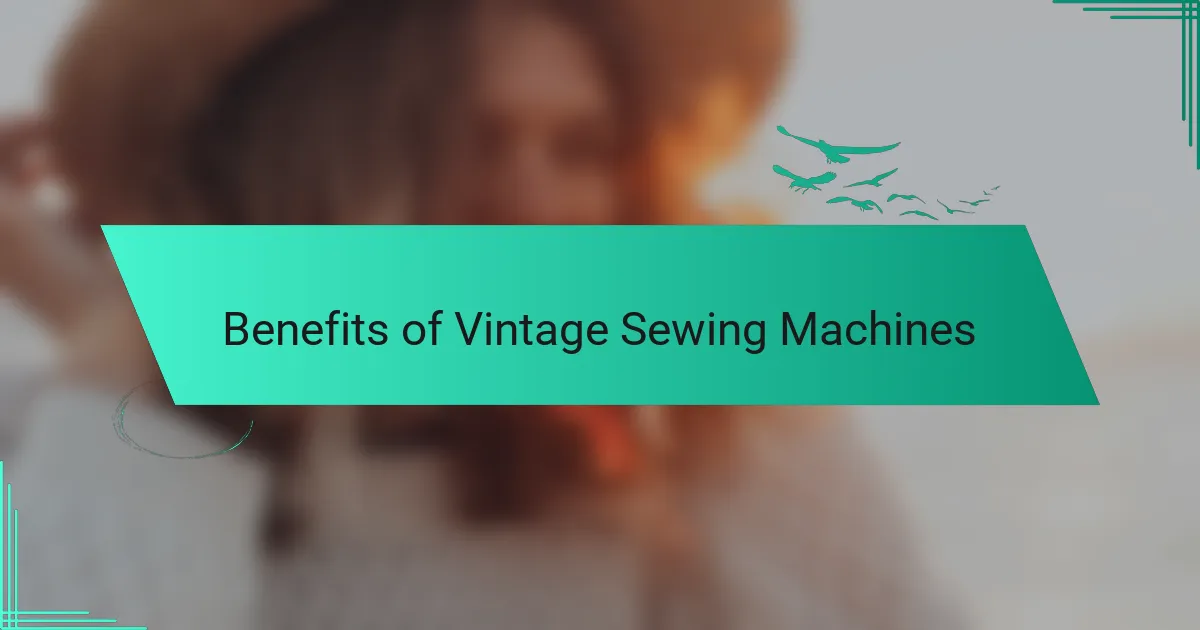
Benefits of Vintage Sewing Machines
Using vintage Singer sewing machines offers numerous benefits that truly enhance the sewing experience. For me, every time I power up a Singer, I am reminded of the stories its previous owners might have created. It feels like I’m not just sewing fabric; I’m intertwining history with my own unique designs.
One big advantage of these vintage machines is their durability. I’ve found that they can handle various fabrics without a hitch. There’s something comforting in knowing that, unlike many modern machines that seem fragile and finicky, my old Singer can stand up to the challenge of heavy canvas or delicate lace. Isn’t it fascinating how a sturdy build can encourage us to experiment more with materials?
Then, there’s the simplicity of operation. Vintage machines don’t overwhelm you with a myriad of settings or buttons. Instead, they require your attention and skill, prompting me to slow down and appreciate the process. Have you ever felt the satisfaction that comes from mastering a technique rather than relying on technology? It’s those moments of triumph that keep me motivated to continue exploring the world of DIY fashion.

Personal Journey with My Singer Machine
My journey with my old-school Singer sewing machine has been a blend of nostalgia and creativity. I remember the first time I set it up; the familiar smell of oil brought back memories of my grandmother sewing beautiful quilts. Each time I step behind the machine, I feel a connection to the past and a surge of motivation to create something new.
Over time, I’ve learned the ins and outs of my Singer, developing a rhythm that feels almost instinctive. There’s something incredibly satisfying about hearing the gentle hum of the motor as I guide fabric through the feed dogs. It reminds me that each stitch I take is a step closer to turning my ideas into reality.
- The tactile experience of winding the bobbin by hand is both calming and grounding.
- I’ve mastered a few stitches that are unique to older Singers, such as the zigzag stitch, which adds charm to my projects.
- Each minor repair or adjustment I’ve made has deepened my appreciation for the craftsmanship of vintage machines.
- I find joy in the challenge of upcycling thrifted fabric, transforming it into one-of-a-kind fashion pieces.
Through this experience, I’ve not only honed my sewing skills but also cultivated a deep appreciation for the stories that each garment can tell.
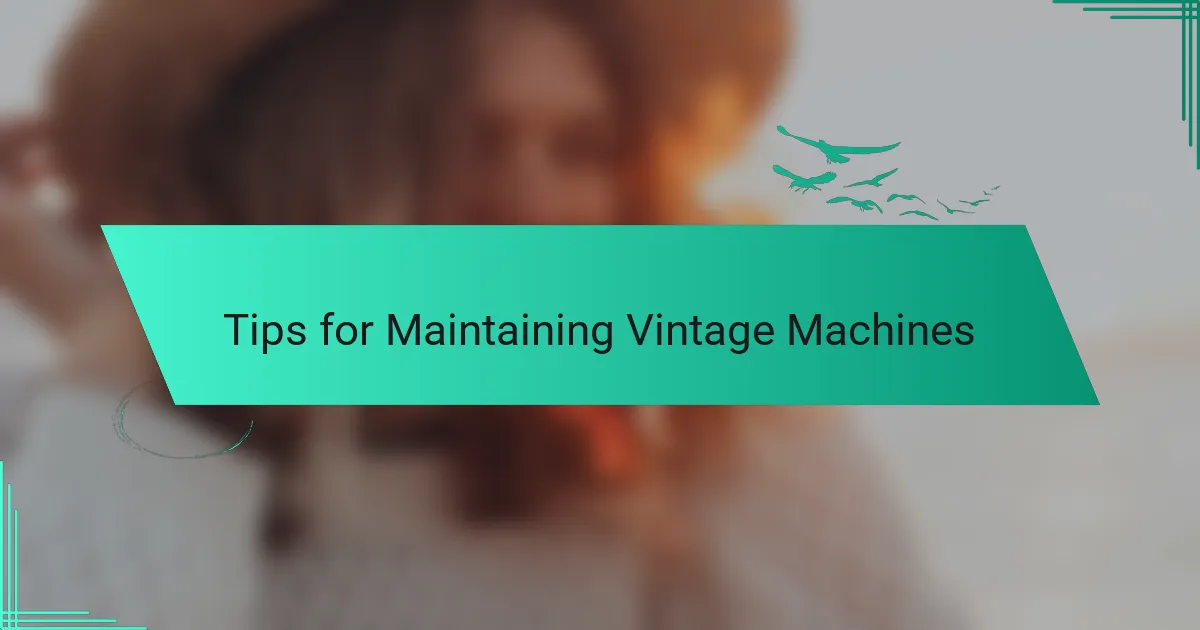
Tips for Maintaining Vintage Machines
Maintaining vintage Singer sewing machines is vital for keeping them in optimal condition and prolonging their lifespan. I remember the first time I used an old-school Singer; it felt like stepping back in time. However, without proper care, even the most reliable machines can encounter issues.
To keep your vintage machine running smoothly, consider these essential tips:
- Regular Cleaning: Dust and lint accumulate quickly, so clean the interior regularly with a soft brush.
- Oil the Moving Parts: Use sewing machine oil to lubricate key moving parts. This keeps everything running fluidly and prevents rust.
- Check the Tension: Proper tension settings ensure even stitching. Take time to adjust it as needed for different fabrics.
- Store Properly: When not in use, cover your machine to protect it from dust and direct sunlight.
- Keep It Dry: Humidity can be a vintage machine’s worst enemy, so find a dry, cool spot for storage.
These small maintenance habits can make all the difference. From personal experience, each time I clean or oil my machine, I feel a sense of connection to the craftsmanship behind it, making the maintenance feel less like a chore and more like a labor of love.
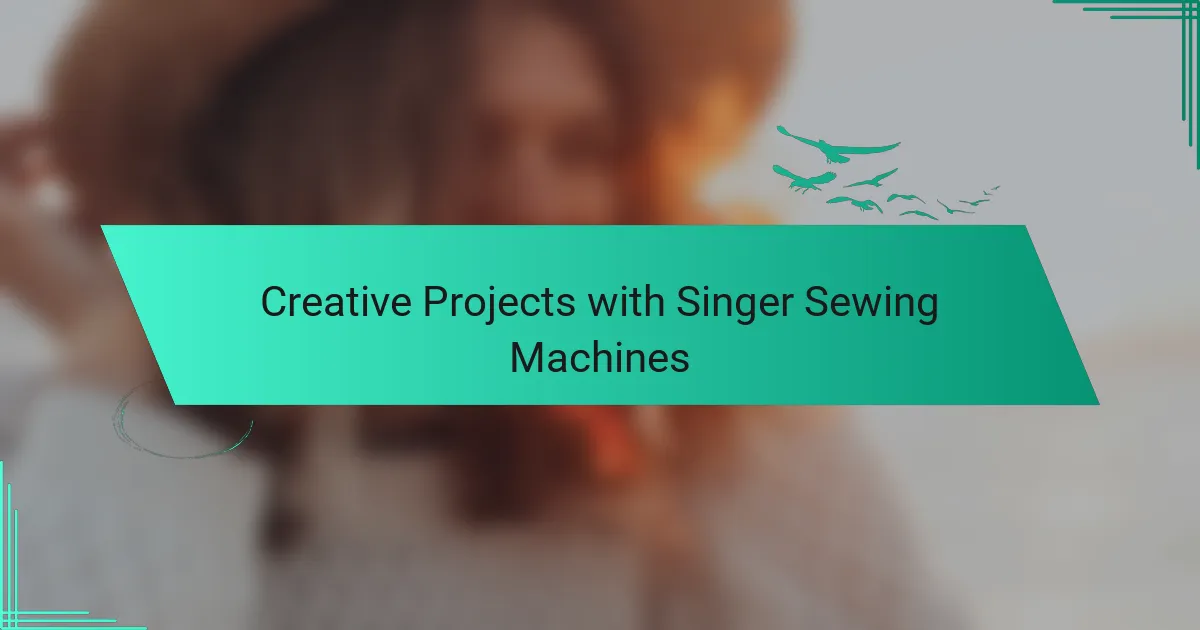
Creative Projects with Singer Sewing Machines
Using old-school Singer sewing machines has truly transformed my creative projects into something special. There’s a certain joy in feeling the sturdy metal under my fingers as I stitch away, reminiscent of the craftsmanship that defined eras past. I remember the first time I turned a vintage tablecloth into a stylish bag; it felt like bringing history into my modern wardrobe.
Here are some creative projects I’ve tackled with my Singer sewing machines:
- Upcycling vintage tablecloths into tote bags
- Transforming old bed linens into whimsical cushion covers
- Creating unique patches from fabric scraps for jackets and jeans
- Making one-of-a-kind dresses using retro patterns
- Sewing fabric storage bins for organizing craft supplies
Each project brings satisfaction, reminding me of the beauty of sustainable fashion and the way it connects us to the stories of those who wore these fabrics before.
